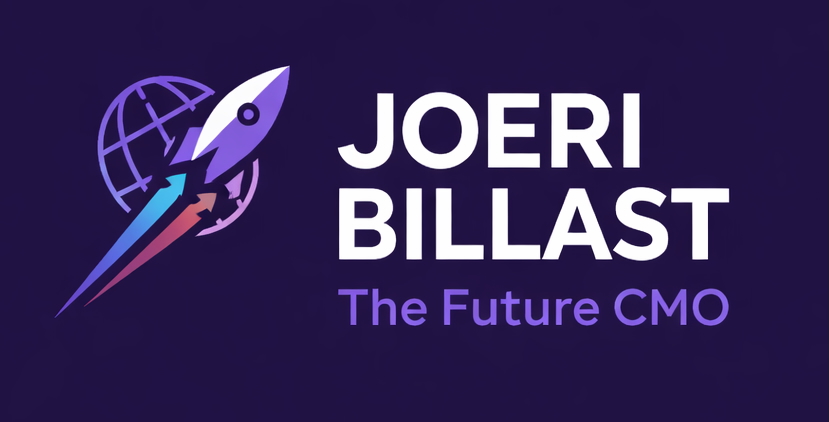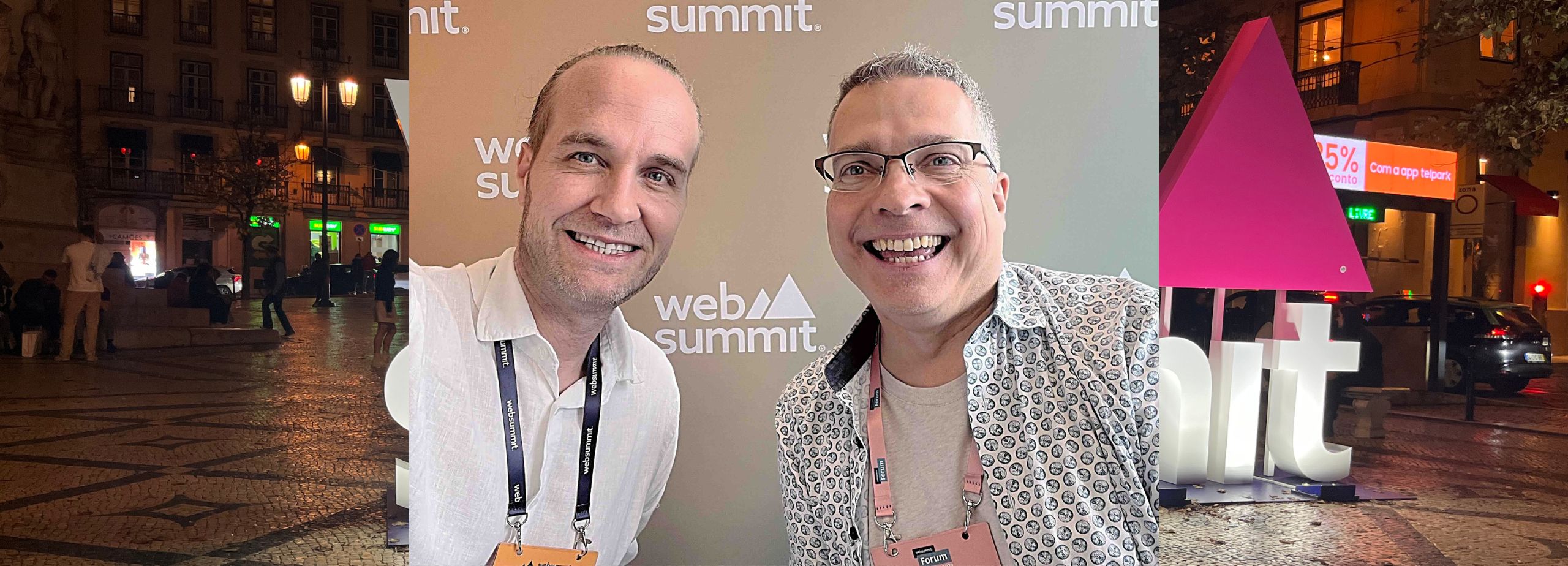Curious to learn how blockchain can redefine your fandom experience?
Join us as we sit down with Eric Ginsberg, Group Director and Head of Marketing at Candy Digital, to explore the future of fan engagement through Web3. Eric brings invaluable insights into how his company is revolutionizing the space with digital collectibles that offer exclusive access and tangible proof of fandom. Learn about the transition from traditional terms like "NFT" to more accessible concepts like "collectibles," and discover the importance of community and a long-term vision in this evolving landscape. We also tackle the challenges of integrating Web2 methods with Web3 innovations, featuring partnerships with Major League Baseball, DC Comics, and Netflix.
In this episode, we break down the complex dynamics of engaging both Web2 and Web3 audiences. Eric delves into the fervent dedication of Web3 enthusiasts, who thrive on platforms like Discord and X, contrasted with mainstream tactics for Web2 audiences on Instagram and TikTok. Through storytelling and high-touch interactions, discover how Candy Digital's unique offerings, like the Bat Cowl, allow fans to be part of the narrative and even co-create characters with DC Comics. Eric also shares his experiences with culturally relevant marketing initiatives like the Revolt Summit, which celebrated hip-hop as a powerful cultural force.
Get ready for an inside look at the innovative world of experiential events and the expansion of AR and VR technology through digital collectibles. From collaborations with icons like Snoop Dogg and Issa Rae to live events and streaming on platforms like Revolt TV, we explore the multifaceted ways Candy Digital is enhancing fan engagement. This episode is packed with insights into creating lasting experiences that go beyond mere transactions, offering fans new and immersive ways to engage with their favorite content.
Enhancing Fan Engagement: The Web's Superpower
The internet has revolutionized how fans interact with their favorite artists, sports teams, and pop culture phenomena. It's not just about consuming content anymore; it's about access and participation. With a few clicks, fans can delve into the world of their idols, and this access has fostered a culture of intense fandom like never before.
The web has become the ultimate enabler of fan engagement, offering exclusive experiences and collectibles that were once unthinkable. For example, a superfan of a K-pop group can now live stream concerts from the other side of the world, interact with fellow fans on dedicated forums, and even purchase exclusive merchandise that showcases their devotion. This level of engagement creates a sense of belonging and community that transcends geographical boundaries.
Blockchain technology takes fan engagement to an even higher level by providing objective proof of fandom. Through non-fungible tokens (NFTs) and digital collectibles, fans can now verifiably own a piece of their favorite franchise. These tokens can represent anything from exclusive artwork to access to VIP events, and their ownership is securely recorded on a blockchain. This not only enhances the fan experience but also opens up new revenue streams for the entertainment industry.
Overcoming Challenges in Merging Web2 and Web3
As we navigate the evolution of the web from Web2 to Web3, it's important to recognize the challenges that come with this transition and how they can be overcome to create a seamless and enriching experience for fans.
One of the key challenges is adapting proven Web2 methods to the Web3 space. What worked in the traditional web environment may not directly translate to the world of blockchain and decentralization. For example, marketing strategies that relied heavily on centralized platforms and data-driven analytics will need to be re-evaluated in a world where user privacy and data ownership are prioritized. This requires a shift in mindset and the development of new tools and techniques to effectively reach and engage audiences.
Additionally, finding long-term stakeholders who understand and embrace the unique characteristics of Web3 is crucial. This includes collaborating with artists and creators who are aligned with the values of transparency and community-building inherent in Web3. By fostering these relationships, we can ensure that the fan experience remains authentic and meaningful.
At the heart of this merger is the opportunity to create richer fan experiences. Web3 technologies, such as blockchain and decentralized finance (DeFi), open up possibilities for fan engagement that were not previously possible. For instance, smart contracts can be used to automate and secure transactions, while decentralized apps (dApps) can provide interactive and immersive experiences that go beyond what traditional websites offer. By leveraging these technologies, we can deliver exclusive and personalized experiences that cater to the diverse interests and passions of fans worldwide.
Bridging the Web2 and Web3 Audience Gap
As we strive to merge the best of Web2 and Web3, it's crucial to recognize the diverse needs and expectations of audiences across these two web eras. Bridging the gap between Web2 and Web3 audiences is essential for fostering widespread adoption and creating inclusive fan experiences.
Tailoring Communication Strategies
Effective communication is key to engaging fans, and this requires tailoring our strategies to resonate with both Web2 and Web3 audiences. For Web2 fans, it's important to provide clear and concise explanations of Web3 concepts, avoiding overly technical jargon. We need to highlight the tangible benefits and showcase how Web3 can enhance their existing fan experiences. On the other hand, Web3 enthusiasts are already immersed in the world of blockchain and decentralization. For them, it's about showcasing the unique value proposition, emphasizing the community-building and transparency that Web3 offers.
Engaging High-Touch Web Audiences
High-touch Web2 audiences, those who are deeply engaged with their favorite artists or franchises, will expect a seamless continuation of their passionate fandom in the Web3 space. To cater to their needs, we must provide exclusive and interactive experiences that build upon their existing devotion. This could include offering NFT collections that grant access to VIP events or creating decentralized communities where they can connect with like-minded fans and feel a sense of belonging.
Reaching the Mainstream Web Audience
To attract mainstream Web2 audiences, we need to focus on accessibility and simplicity. This involves creating user-friendly interfaces and step-by-step guides to demystify the world of Web3. By making the onboarding process intuitive and straightforward, we can lower the barrier to entry and encourage wider participation. Additionally, partnering with mainstream artists and influencers who can act as ambassadors for Web3 can help bridge the gap and bring a broader audience to this new era of the web.
Moving Beyond NFT Terminology
While NFTs have gained significant traction and media attention, the terminology and concepts surrounding them can sometimes be off-putting or confusing to those unfamiliar with Web3. To engage a wider audience, it's important to focus on the underlying benefits and experiences rather than getting bogged down in technical details. Instead of leading with "NFTs," we can emphasize "digital collectibles" or "exclusive fan experiences." By shifting the focus to the tangible value proposition, we can make Web3 more approachable and appealing to mainstream audiences.
Storytelling and Authenticity in Digital Collectibles
In the world of Web3 and digital collectibles, storytelling becomes a powerful tool to create engaging and immersive fan experiences. It's not just about owning a piece of digital art but also about becoming a part of a larger narrative that unfolds over time. By creating compelling stories around collectibles, we can engage fans on a deeper level and build a strong connection between the artist, the collection, and the community.
For example, consider a digital collectible project that centers around a fantasy world filled with magical creatures. Each collectible represents a unique character or artifact from this imaginary realm. The creators can build an expansive storyline, releasing new chapters and content that expand the universe and deepen the connection fans feel with their collectibles. Fans not only own a piece of digital art but also become invested in the ongoing story, eagerly anticipating new releases and developments.
Additionally, fan engagement can be taken a step further by involving them in the story creation process. This could be done through community events, contests, or polls that influence the direction of the narrative. For instance, fans could vote on decisions that impact the storyline, such as choosing the outcome of a character's journey or deciding on the theme for an upcoming drop. This level of interactivity and community involvement adds a layer of authenticity and exclusivity to the collectibles, enhancing their value and appeal.
A great example of successful storytelling in digital collectibles is the Bored Ape Yacht Club (BAYC). The creators of BAYC didn't just sell ape-themed profile pictures; they crafted a narrative around an exclusive yacht club filled with celebrity members. They built a world where each ape had a unique personality and backstory, fostering a sense of community and exclusivity among owners. The story didn't end with the initial sale; it continued to evolve with community-driven initiatives, exclusive events, and collaborations that kept fans engaged and invested in the BAYC universe.
Innovating Cultural Events and Campaigns
In the ever-evolving landscape of Web3, it's essential to infuse cultural relevance with innovation to create captivating experiences. By integrating cultural nuances and themes into events and campaigns, we can forge deeper connections with our audience and offer them something truly unique and memorable.
A stellar example of this fusion is the Rebolt Summit, a revolutionary event that challenged the traditional conference format and immersed attendees in a cultural journey. The summit "aimed to bring together the most influential and innovative minds across music, art, film, TV, sports, and tech". By gathering a diverse array of creators and thinkers, the event catalyzed a cultural exchange and sparked cross-industry collaborations. It served as a platform for attendees to explore the intersection of culture and technology, fostering a sense of community and inspiring new ideas.
What set Rebolt Summit apart was its commitment to experiential design. The event transcended the typical conference setup by incorporating interactive installations, immersive performances, and curated networking experiences. Attendees weren't passive observers but active participants, engaging with the event on a deeper level and forming lasting connections. The summit blurred the lines between industries and inspired a cultural movement, showcasing how innovative event formats can enhance community-building and leave a lasting impact.
Rebolt Summit redefined what an experiential event could be in the Web3 era. It raised the bar for cultural relevance and showed how immersive design can heighten the attendee experience. By marrying cultural themes with innovative formats, the event created a lasting impression and inspired a new wave of event design. It serves as a testament to the power of cultural innovation and sets a precedent for future Web3 events and campaigns.
Monetizing Web3 Experiences: Strategies for Long-Term Success
The world of Web3 offers countless opportunities for monetization, and it's crucial to adopt strategies that focus on long-term sustainability. This section explores innovative approaches to monetizing Web3 experiences, ensuring a steady revenue stream and engaging users.
Interactive Games and Fan Engagement
Gaming has always been a significant aspect of Web3, and it presents a prime opportunity for monetization. By creating interactive games with fan engagement at their core, projects can offer in-game purchases and exclusive rewards that enhance the player experience. For example, consider a fantasy-themed game where players can purchase unique items or abilities that provide an edge in their quests. These could be limited-edition weapons, rare resources, or access to exclusive game modes. By integrating NFT technology, projects can also offer digital ownership of in-game assets, allowing players to trade, sell, or showcase their accomplishments.
Additionally, fan engagement strategies can be monetized through subscription models or exclusive access passes. Projects can offer dedicated fans the opportunity to become "insiders" or "patrons", gaining access to exclusive content, early demos, or behind-the-scenes insights. This not only generates revenue but also fosters a sense of community and involvement, encouraging fans to become active participants in the project's success.
Exclusive Events and Experiences
In the world of Web3, exclusive events and experiences can be powerful monetization tools. By creating VIP access passes, exclusive membership programs, or invitation-only events, projects can offer premium experiences that cater to dedicated fans. These events can be designed as digital gatherings, metaverse concerts, or even physical experiences that blend the digital and real worlds. For example, a project could host a metaverse fashion show, where attendees gain access to exclusive digital wearables and front-row seats to the latest collections.
Additionally, partnerships can play a crucial role in creating exclusive experiences. Collaborating with brands, artists, or influencers allows projects to offer unique experiences that leverage the appeal of multiple communities. These partnerships can result in limited-edition drops, exclusive merchandise, or once-in-a-lifetime experiences that dedicated fans are willing to pay for.
Leveraging Augmented Reality for Fan Engagement
Augmented Reality (AR) is a powerful tool for enhancing fan experiences and creating lasting memories. By blending digital content with the physical world, projects can bring fan engagement to a whole new level. Let's explore some practical applications of AR and dive into a case study that showcases the potential of this immersive technology.
Practical Applications of AR in Fan Experiences
AR technology offers a multitude of opportunities to engage and delight fans. Here are some practical ways in which AR can be utilized:
- Interactive Displays: AR can transform static displays into interactive experiences. For example, a museum could use AR to bring exhibits to life, allowing visitors to explore artifacts or artwork in a completely new way.
- Location-Based Experiences: AR can be used to create location-based scavenger hunts or interactive tours. Fans can explore a city or venue while discovering exclusive content or completing challenges.
- Try-On and Product Visualization: AR try-on features allow fans to virtually try on apparel, accessories, or even cosmetics. This enhances the shopping experience and provides a unique way for fans to engage with products.
- Enhanced Publications: AR can bring books, magazines, and marketing collateral to life. By scanning pages or images, fans can unlock exclusive content, behind-the-scenes videos, or interactive features.
Case Study: Stranger Things Collectibles
A great example of AR enhancing fan engagement can be found in the Stranger Things franchise. To celebrate the release of the final season, Netflix partnered with Snapchat to create a unique AR experience centered around digital collectibles. Here's how it worked:
"Fans could use the Snapchat app to scan a 'Stranger Things' poster or t-shirt, which would then unlock an exclusive lens. This lens transported them into the show's iconic 'Upside Down' world, where they could interact with digital collectibles, take photos, and share their experiences with their friends."
This innovative use of AR not only created a buzz around the show's release but also provided a unique and memorable experience for fans. It blurred the lines between the physical and digital worlds, allowing fans to immerse themselves in the Stranger Things universe.
Enhancing Digital Collectibles with AR
AR technology can take digital collectibles to the next level, adding an extra layer of interactivity and immersion. Here are some ways AR can enhance digital collectibles:
- Interactive 3D Models: AR can bring digital collectibles to life, allowing fans to interact with 3D models and view them from different angles. For example, a digital collectible of a character could have animated movements and sound effects.
- Augmented Environments: AR can place digital collectibles in the user's environment, allowing them to visualize and interact with the collectibles in a personal space. This could be a digital statue, a piece of artwork, or even a virtual pet.
- Dynamic Content: AR can be used to provide dynamic and changing content for digital collectibles. For instance, a digital collectible could feature exclusive video content, interactive mini-games, or augmented reality filters.
The Future of Digital Collectibles: The Metaverse and VR
The metaverse and virtual reality (VR) are set to revolutionize the way we interact with digital collectibles. This immersive technology will not only enhance the fan experience but also open up new opportunities for engagement and monetization. Let's explore the potential of VR and the metaverse, as well as the challenges and possibilities they present for the world of digital collectibles.
The Role of VR and the Metaverse
VR and the metaverse offer a truly immersive experience, allowing users to step into a virtual world. In the context of digital collectibles, this technology enables fans to interact with their favorite items and characters in a whole new way. For example, a VR headset can transport users into a virtual gallery where they can browse and interact with their digital art collection. The metaverse, a persistent online universe, offers an even more expansive experience, allowing users to showcase their digital collectibles, interact with other fans, and even participate in virtual events and exhibitions.
This technology has the potential to transform the way we perceive and engage with digital assets, making the experience more tactile and lifelike. It adds a new dimension to the fan experience, creating a sense of presence and ownership that was previously unattainable.
Challenges and Opportunities in VR Adoption
While VR and the metaverse present exciting opportunities, there are also challenges to consider. One of the main hurdles is the adoption rate of VR technology. Currently, VR headsets and devices can be costly, and not everyone has access to them. Additionally, there are technical challenges associated with creating and maintaining immersive virtual worlds. Ensuring compatibility, performance, and a seamless user experience are all factors that need to be addressed.
However, the potential benefits outweigh the challenges. As VR technology becomes more accessible and affordable, we can expect to see a broader adoption and a richer ecosystem of virtual worlds and experiences. This presents new opportunities for digital collectible projects to engage with their fans and create immersive experiences that were previously unimaginable. It also opens up possibilities for collaborations and cross-project integrations, further enriching the fan experience.
Integrating Digital Collectibles into Virtual Worlds
The integration of digital collectibles into virtual worlds offers a seamless and immersive experience for fans. Imagine a fan entering a virtual gallery and being able to view their digital art collection on the walls, or interacting with a digital statue of their favorite character. This level of immersion enhances the connection between fans and the projects they support.
Furthermore, the interoperability of digital collectibles in the metaverse allows for a more dynamic and interactive experience. Fans can showcase their collections to others, trade and exchange items, and even participate in virtual markets and auctions. This adds a layer of social interaction and community building that was lacking in traditional digital collectible platforms.
Takeaways and Conclusion
As we've explored throughout this discussion, the web3 space presents tremendous opportunities for deeper fan engagement and innovative experiences. By leveraging the potential of web3, projects like MLB Champions Network can enhance fan interaction and create lasting connections. The key takeaways from our conversation highlight the importance of adapting to the web3 landscape and embracing the unique opportunities it presents.
Firstly, web3 offers unique opportunities for fan engagement through exclusive access and digital collectibles. By providing exclusive content and experiences to fans, projects can create a sense of belonging and community. Digital collectibles, such as NFTs, offer ownership and scarcity, driving fan enthusiasm and creating a market for tradable assets. Overcoming the challenges of merging web2 and web3 involves adapting proven methods and identifying long-term stakeholders who share the vision.
Effective communication strategies are crucial, and they must cater to both web2 and web3 audiences. Moving beyond technical jargon, projects should focus on storytelling and authenticity to create meaningful digital collectibles that resonate with fans. Innovating cultural events and experiences requires a blend of cultural relevance and cutting-edge technology, ensuring that fans remain at the heart of the experience.
When it comes to monetization, web3 experiences should focus on long-term engagement and interactive fan interactions. By creating compelling reasons for fans to stay engaged, projects can build sustainable revenue streams. Additionally, augmented reality (AR) can play a significant role in enhancing fan engagement. By bringing digital collectibles to life, AR adds a layer of interactivity and immersion that strengthens the fan experience.
While we've discussed the challenges and opportunities of VR adoption, the future of digital collectibles is undoubtedly tied to the integration of VR and the metaverse. As VR technology becomes more accessible, we can expect to see a broader adoption and a richer, more immersive fan experience. By embracing web3, projects can create dynamic and immersive experiences that captivate fans and drive long-term engagement.
Final Thoughts
The Web3 space is evolving rapidly, and projects must stay agile to keep pace with changing technologies and fan expectations. By embracing the opportunities presented by Web3, MLB Champions Network and similar projects can forge deeper connections with their fans and unlock new avenues for growth. It's an exciting time for the industry, and we can't wait to see the innovative ways projects engage and captivate their audiences.
Conclusion: Unlocking the Power of Web for Fan Engagement
Throughout this discussion, we've delved into the immense potential of web3 for enhancing fan engagement and creating lasting connections. The MLB Champions Network project serves as a testament to how Web3 can revolutionize the sports industry, offering dynamic and immersive experiences that captivate fans and drive long-term engagement.
As we reflect on the key themes and insights, three prominent factors emerge: access, fandom, and authenticity. By providing exclusive content and digital collectibles, projects can break down barriers and offer fans unprecedented access to their favorite sports and teams. This sense of inclusion fosters a deeper level of fandom, with fans feeling invested in the success and community surrounding the sport.
Authenticity is also crucial. Fans crave meaningful interactions and digital collectibles that reflect the essence of the sport and their passion. This authenticity, coupled with cultural relevance, ensures that fans remain at the heart of the experience, creating a resonant and enduring connection.
Actionable Insights for Brands
So, what are the practical steps for brands and projects looking to emulate this success and enhance fan engagement? Here are some key insights to consider:
- Embrace Web3 Opportunities: Recognize the potential of Web3 to create exclusive experiences and digital collectibles. Adapt your strategies to embrace this new landscape and engage both web2 and Web3 audiences.
- Focus on Storytelling: Move beyond technical jargon and focus on storytelling. Create narratives that resonate with fans and showcase the authenticity and cultural relevance of your brand.
- Innovate with AR and VR: Explore the potential of augmented reality and virtual reality to bring digital collectibles to life. These technologies add interactivity and immersion, enhancing the fan experience.
- Prioritize Long-Term Engagement: Build sustainable revenue streams by prioritizing long-term fan engagement. Create compelling reasons for fans to stay involved and interact with your brand.
- Foster Community: Encourage community building and interaction among fans. This sense of belonging will enhance the fan experience and foster lasting connections.
Future Outlook: Evolving with Technological Advances
The world of Web3 is evolving rapidly, and projects must stay agile to keep pace. With technological advances on the horizon, such as the integration of VR and the metaverse, the fan experience will become even more immersive and engaging. By embracing these advancements, projects can create dynamic and interactive experiences that captivate fans and unlock new avenues for growth.
Additionally, the rise of AI and machine learning presents opportunities for personalized fan engagement. Projects can utilize these technologies to tailor experiences and interactions to individual fan preferences, creating a truly customized journey.
In conclusion, the power of Web3 in fan engagement is undeniable. By leveraging the tools and opportunities presented by this evolving space, brands and projects can forge deeper connections with their fans and unlock a world of innovative experiences. It's an exciting journey that promises to transform the way we engage with sports and entertainment.

Eric Ginsberg, Candy Digital
KEY HIGHLIGHTS
[01:06] How will Web3 redefine engagement and consumption of digital content in sports and entertainment marketing?
[04:25] What challenges have you encountered when merging worlds like sports and entertainment with Web3?
[06:54] How do you ensure that your efforts resonate with both audiences—the one familiar with Web3 and the one that isn't?
[10:35] How does Candy Digital ensure that each collectible becomes more than just a transaction, but a part of a larger narrative?
[12:23] How do you approach creating campaigns that are culturally relevant while also pushing the envelope in innovation?
[15:02] Can you explain how new revenue streams can be utilized in your role, considering the monetization aspect?
[18:33] How do you envision the future of digital collectibles and fan experiences in AR/VR, or what some might call the metaverse or spatial computing?
NOTABLE QUOTES
“I think this is really the real reason I got into Web3 in the first place. I was really working in sports and music and really focusing on two elements of fandom that I think that Web3 can really enable and take to a whole new level.”
“If we strip away all the technology, all the buzzwords, all the crypto, all the blockchain, at the simplest level, Web3 enables you to take your fandom to the next level.”
- “The blockchain, at the end of the day, it's an objective proof point of fandom.”
“We wanted to release products that have a story that let fans be a part of a new world.”
“It's one of the unique aspects of Web3 because you have at its core, between web two and Web3. The audiences want similar things. They want access, they want exclusivity, they want to be a part of something and they want to prove their fandom.”
MENTIONED RESOURCES
Candy: https://www.candy.com/
CONNECT
LinkedIn: https://www.linkedin.com/in/ericbginsberg/






